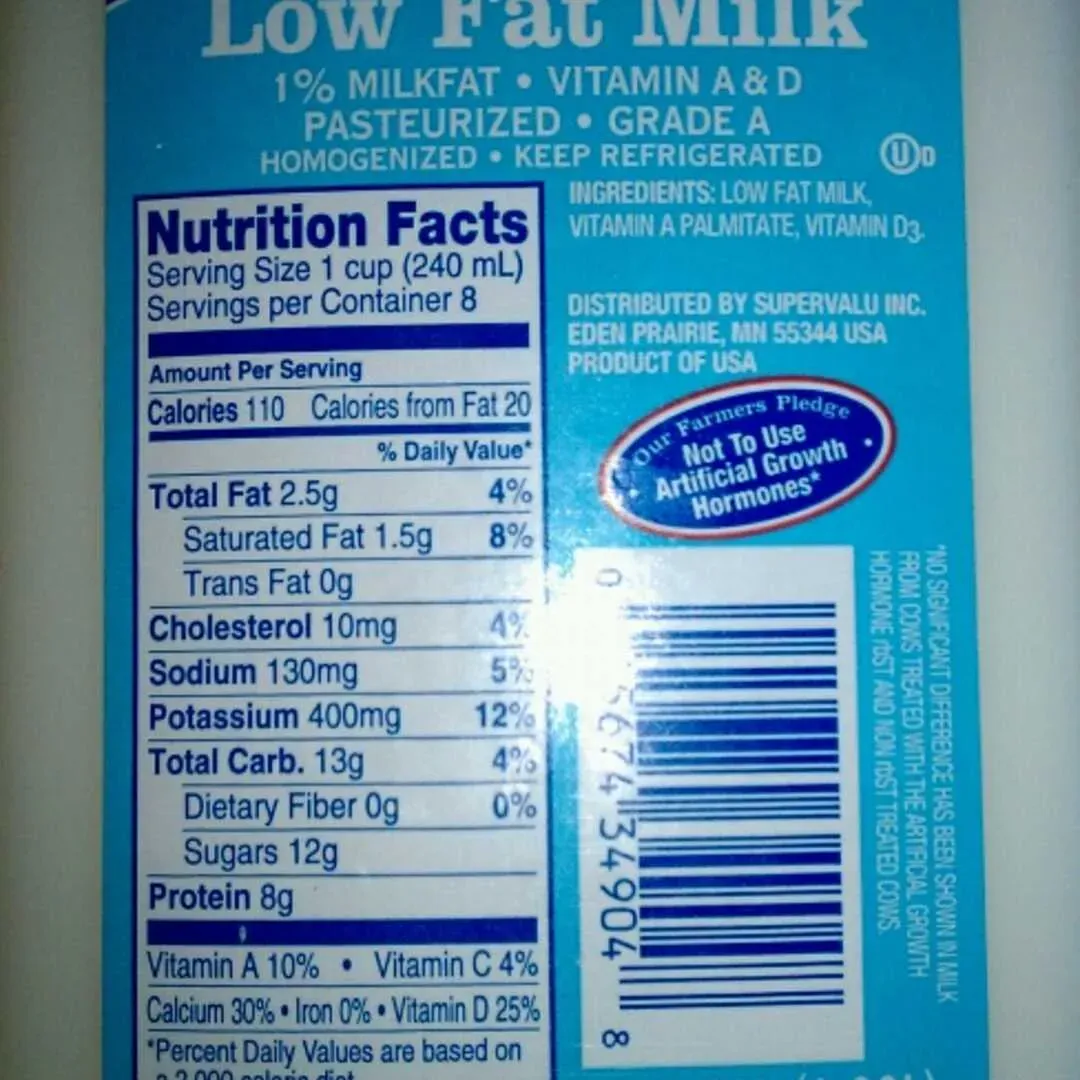Table of Contents
Alright, let's talk protein. It seems like every other week there's a new superfood powder or trendy shake promising sculpted abs and boundless energy. It's enough to make your head spin. But sometimes, the best stuff is already sitting in your fridge, no fancy marketing required. We're talking about low fat milk protein. It's not glamorous, it's not exotic, but it delivers.
Unpacking Low Fat Milk Protein: What Exactly Is It?

Unpacking Low Fat Milk Protein: What Exactly Is It?
Beyond Just Skimming the Surface
so you see "low fat milk protein" on a label or hear it mentioned, and maybe you just think, "milk, but less fatty, and it has protein." That's not wrong, but it's like saying a car is just metal and wheels. Low fat milk starts as regular milk from a cow. The "low fat" part means the cream, where most of the fat lives, has been significantly reduced or removed. What's left is primarily water, lactose (milk sugar), vitamins, minerals, and, crucially, the protein. It's a natural, whole-food source before any processing happens.
Think of it as getting the core building blocks without the extra baggage. It's not some synthetic creation in a lab; it's just milk, processed to lower the fat content while keeping the valuable protein matrix intact. This difference matters when you're looking for something effective and straightforward for your diet.
The Dynamic Duo: Whey and Casein
The protein in low fat milk isn't just one thing; it's mainly two big players: whey and casein. These aren't just names; they behave differently in your body. Whey protein is often called a "fast" protein because it digests relatively quickly. This means the amino acids, the tiny units that make up protein, hit your bloodstream pretty fast after you drink it.
Casein, on the other hand, is a "slow" protein. It forms a sort of gel in your stomach and takes much longer to break down and release its amino acids. This provides a more sustained release over several hours. It's like the difference between a quick espresso shot and a slow-drip coffee. Both have caffeine, but they deliver it differently. Low fat milk protein gives you both, naturally blended.
Protein Type | Digestion Speed | Release Profile |
|---|---|---|
Whey | Fast | Quick burst of amino acids |
Casein | Slow | Sustained release over hours |
More Than Just Muscle Fuel
While protein is famous for muscle building and repair, the protein in low fat milk does more. It contains all nine essential amino acids your body can't make on its own. This makes it a complete protein source. Beyond the protein itself, low fat milk brings along other nutrients like calcium, vitamin D (often added), and B vitamins, which are important for bone health, energy metabolism, and overall function.
Focusing on low fat milk protein isn't just about hitting a protein number; it's about getting a package deal. It's a nutrient-dense option that supports various bodily processes, not just flexing in the mirror. It's a foundational element in a balanced diet, not a magic bullet, but a reliable tool.
The Undeniable Benefits of Low Fat Milk Protein
Fueling Your Day, Simply
so we know what low fat milk protein is – basically milk minus the fat, keeping the good protein. Now, why bother? The benefits aren't some miracle cure, but they are solid, practical, and fit into a normal life. Getting adequate protein throughout the day helps you feel full, which can be a real win when you're trying to manage your appetite or avoid that 3 pm snack raid on the office vending machine. Plus, that mix of fast whey and slow casein means you get both immediate protein support and a longer-lasting supply, helping muscles recover and grow after exercise, or just keeping things ticking over if you're not exactly hitting the gym daily. It's a straightforward way to bump up your protein intake without resorting to expensive, weird-tasting powders or spending an hour cooking a steak.
Getting Your Fill of Low Fat Milk Protein Every Day

Getting Your Fill of Low Fat Milk Protein Every Day
Pouring It Straight Up
Alright, so you're sold on the idea of low fat milk protein. How do you actually get this stuff into your body without making it a chore? The simplest way, and honestly, the most underrated, is just drinking it. A cold glass with breakfast? Done. Need a quick something after a workout? Pour some low fat milk protein. It’s not rocket science, and that's the beauty of it. No mixing powders, no weird textures. It's just a familiar, easy drink. Keep a carton in the fridge at work if you have one, or pack a small thermos. Seriously, sometimes the easiest path is the best one. Don't overthink it.
Mixing It Into the Daily Grind
Drinking it straight is fine, but low fat milk protein is also pretty versatile. Don't limit yourself. Use it in your morning cereal instead of water or some plant-based alternative that tastes like cardboard. Blend it into smoothies – it adds creaminess and a protein punch without extra fat. Cook oatmeal with it. You can even use it in some baking recipes where milk is called for. It integrates seamlessly into a lot of things you're probably already making, subtly boosting the protein content without changing the flavor dramatically. It's a low-effort way to upgrade your usual meals and snacks.
Think about your typical day. Where could a splash of low fat milk protein fit in without disrupting your routine? It's about smart swaps, not adding extra steps to an already busy schedule.
- Add to morning coffee or tea (use sparingly if heating).
- Blend into fruit smoothies.
- Cook oatmeal or cream of wheat with it.
- Use in pancake or waffle batter.
- Substitute for water when making scrambled eggs (adds fluffiness).
Strategic Sips for Specific Goals
While just drinking low fat milk protein whenever you feel like it works, timing can sometimes matter depending on what you're aiming for. If you're focused on muscle recovery after exercise, having some relatively soon after your workout makes sense – the whey gets to work quickly. If you want something to tide you over between meals or before bed, the slower-digesting casein in low fat milk protein can help provide a steady trickle of amino acids overnight. It's not about strict timing rules, but understanding how the whey and casein components behave lets you use it a bit more strategically if you want to. A small glass before bed isn't a bad idea if you often wake up feeling ravenous.
Navigating the Options: Finding Your Low Fat Milk Protein Source

Navigating the Options: Finding Your Low Fat Milk Protein Source
The Dairy Aisle Dive
so you're standing in the grocery store, staring at the wall of milk cartons. It's not just "low fat" anymore, is it? You've got 1%, 2%, skim, organic, lactose-free low fat milk protein options... it can feel like a lot just to grab some protein. The good news is, they all offer that core low fat milk protein package – the whey and casein mix – just with slightly different levels of fat and sometimes other modifications. Skim milk has the least fat, obviously, while 1% and 2% have a little more, but still significantly less than whole milk. The protein content per serving stays remarkably consistent across these lower-fat versions. Don't get paralyzed by choice; any of these gets you that valuable low fat milk protein without the saturated fat load of whole milk. Pick based on your taste preference or specific dietary needs, like if you need lactose-free.
Reading the Fine Print (Sort Of)
Beyond the fat percentage, what else should you peek at on the label when hunting for your low fat milk protein? Primarily, check the protein grams per serving. It's usually around 8 grams in an 8-ounce glass, give or take a little depending on the brand and exact type (skim, 1%, etc.). Also, glance at the added sugars. Most plain low fat milk doesn't have added sugar, but flavored versions (chocolate, strawberry) can pack a surprising amount. You're looking for the protein, not an unnecessary sugar rush. Finally, check for vitamin D and calcium fortification, which is standard practice and a nice bonus alongside the low fat milk protein.
- Protein grams per serving (aim for ~8g per 8oz)
- Added sugars (preferably none in plain versions)
- Vitamin D and Calcium fortification
- Lactose content (if you have sensitivity)
Beyond the Carton: Other Avenues?
While drinking the stuff straight from the carton is the most direct way to get low fat milk protein, it's worth noting that whey and casein proteins derived from milk are also sold as powders. These are often concentrates or isolates, stripped down further. However, the beauty of getting your low fat milk protein from actual milk is that it's a less processed food source. You get the natural blend of whey and casein, plus the vitamins and minerals naturally present or added back. If you're just looking for a simple, whole-food way to boost protein, the milk carton is your friend. Powders have their place for specific needs, but for everyday, easy low fat milk protein, the liquid form is hard to beat for convenience and nutrient synergy.
Low Fat Milk Protein: Busting Common Myths and Misconceptions

Low Fat Milk Protein: Busting Common Myths and Misconceptions
Myth: Low Fat Means No Protein
One thing you hear sometimes is that by taking the fat out of milk, you're also taking away the good stuff, like protein. That's just not how it works. When milk is processed to reduce fat, they're separating out the cream. The protein structure, the whey and casein we talked about, stays in the liquid part. So, whether you're drinking skim, 1%, or 2% milk, the protein content per glass is remarkably similar to whole milk. You get the same valuable low fat milk protein without the extra saturated fat calories. It’s a targeted approach – keeping the protein, shedding the fat. Thinking low fat milk is protein-deficient is like thinking a decaf coffee has no flavor; it just lacks the caffeine kick.
Myth: You Need Full-Fat for Nutrients
Another common one is the idea that you miss out on essential nutrients if you don't drink whole milk. While whole milk does contain fat-soluble vitamins like A and D naturally in its fat, these vitamins are typically added back into lower-fat versions like low fat milk protein during processing. This is called fortification, and it ensures you still get these important micronutrients. You're not sacrificing vitamins A and D by choosing low fat. Plus, the calcium and other minerals are still there, bound to the non-fat part of the milk. So, you can get the protein, calcium, and vitamins without the higher fat load.
- Low fat milk protein *does* contain protein, similar to whole milk.
- Fat is removed, not the protein matrix.
- Vitamins A and D are typically added back (fortified) into low-fat milk.
- Calcium and other minerals remain in the low-fat liquid.
Low Fat Milk Protein: Simple, Effective, Done
So, there you have it. Low fat milk protein isn't some magic bullet, but it doesn't need to be. It's a reliable source of protein, readily available, and easy to incorporate into your daily meals or snacks. It supports muscle function and keeps you feeling full without the extra fat. No need for expensive powders or complicated regimens. Sometimes, the most effective tools are the ones you already have access to. Just milk, providing solid protein without the fuss.
